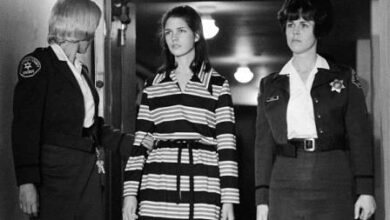
Introduction
The realm of serial killers has long been dominated by male perpetrators, but throughout history, there have been instances where women have also committed heinous crimes. Myra Hindley, a notorious figure in criminal history, stands as a chilling example of a female serial killer. This article delves into the psyche of Myra Hindley, exploring the factors that led to her involvement in a series of gruesome murders, and sheds light on the broader phenomenon of female serial killers.
Understanding the Mind of Myra Hindley
Myra Hindley, along with her partner Ian Brady, was responsible for the Moors Murders, a series of five killings that occurred between 1963 and 1965. What led Hindley, a seemingly ordinary woman, to participate in such horrific crimes? Psychologists and criminologists have explored various aspects of her life, from childhood experiences to her relationship with Brady, in an attempt to comprehend the psychological makeup of a female serial killer.
1. Childhood Trauma and Environmental Influences
Research suggests that childhood trauma and adverse environmental factors can play a significant role in shaping the behavior of serial killers, regardless of their gender. Hindley’s troubled upbringing, marked by abuse and a chaotic family environment, might have contributed to her psychological instability. Understanding the impact of these early experiences is crucial in comprehending the development of violent tendencies in individuals.
2. Relationship Dynamics
Myra Hindley’s relationship with Ian Brady was a critical element in her involvement in the murders. Often, female serial killers operate in tandem with male partners, their actions influenced by power dynamics, coercion, or a shared deviant fantasy. Studying these relationships offers insights into how individuals can be manipulated into committing heinous acts, underscoring the importance of recognizing signs of abusive partnerships.
3. The Role of Psychopathy and Sociopathy
Psychopathy and sociopathy, characterized by a lack of empathy, remorse, and moral inhibitions, are common traits observed in both male and female serial killers. Hindley’s apparent lack of remorse for her actions aligns with these traits, highlighting the importance of early identification and intervention in individuals displaying such behavioral tendencies.
Female Serial Killers: Breaking Stereotypes
While female serial killers are less common than their male counterparts, their existence challenges societal stereotypes about gender and violence. Research indicates that women often employ methods that involve poisoning or manipulation, differing from the overtly violent approaches preferred by many male serial killers. Understanding these nuances is essential in broadening our perspective on criminal behavior and enhancing prevention strategies.
Conclusion: Learning from Myra Hindley
Studying the case of Myra Hindley provides valuable insights into the complex factors that contribute to the emergence of female serial killers. By comprehending the psychological, social, and environmental elements at play, researchers and law enforcement agencies can develop more effective profiling techniques and prevention methods. Myra Hindley’s story serves as a stark reminder of the darkness that can reside within anyone, regardless of gender, emphasizing the need for vigilance, empathy, and support systems to prevent the emergence of future perpetrators.

